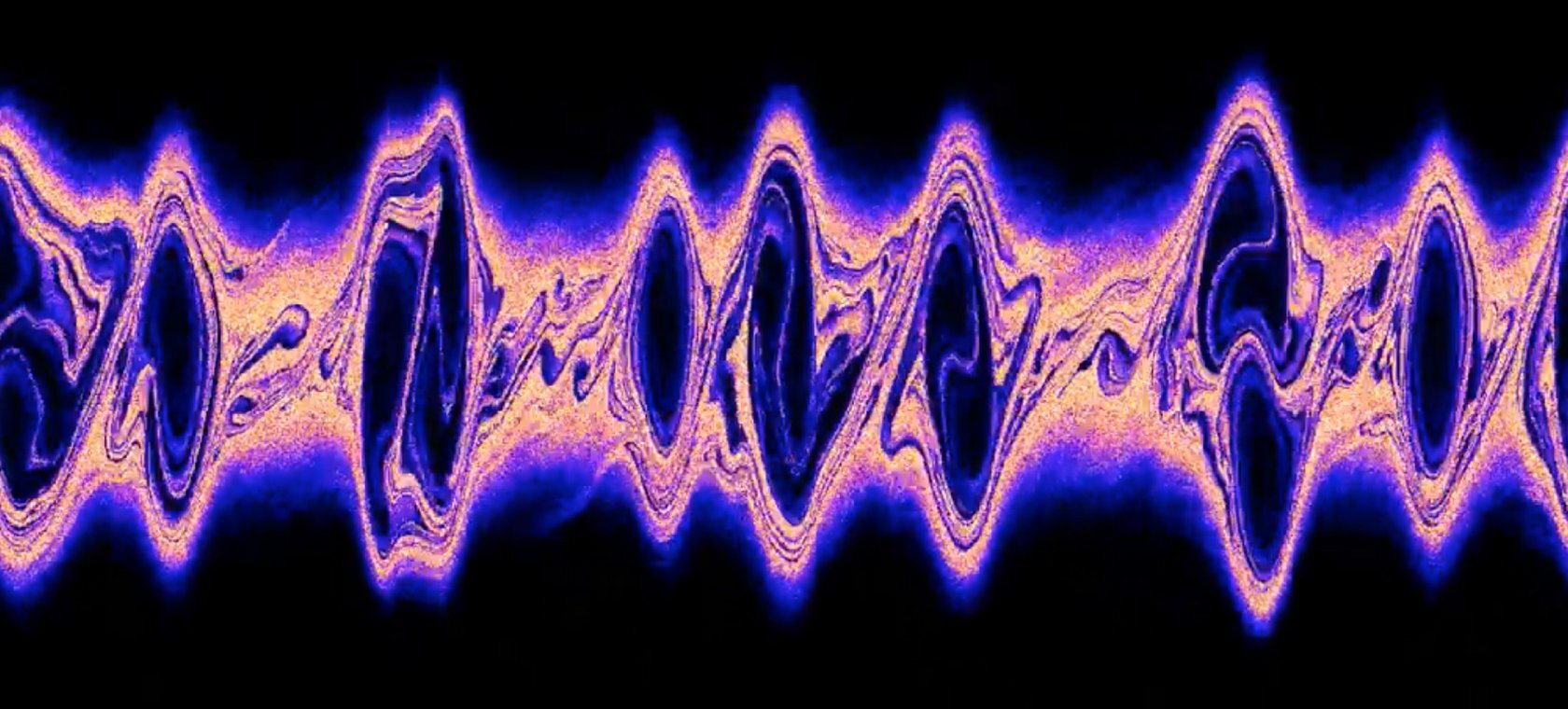18.12.2023

Simulation of cosmic rays counter-streaming against a background plasma and exciting a plasma instability. Shown is the distribution of background particles responding to the streaming cosmic rays in phase space, which is spanned by particle position (horizontal axis) and velocity (vertical axis). The colours visualize the number density and the phase space holes are manifestations of the highly dynamical nature of the instability that dissipates ordered into random motions.
Credit: Shalaby/AIP
Scientists from the Leibniz Institute for Astrophysics Potsdam (AIP) have discovered a new plasma instability that promises to revolutionize our understanding of the origin of cosmic rays and their dynamic impact on galaxies.
At the beginning of the last century, Victor Hess discovered a new phenomenon called cosmic rays that later on earned him the Nobel prize. He conducted high-altitude balloon flights to find that the Earth’s atmosphere is not ionized by the radioactivity of the ground. Instead, he confirmed that the origin of ionization was extra-terrestrial. Subsequently, it was determined that cosmic “rays” consist of charged particles from outer space flying close to the speed of light rather than radiation. However, the name “cosmic rays” outlasted these findings.
In the new study, Dr Mohamad Shalaby, scientists at AIP and the main author of this study, and his collaborators have performed numerical simulations to follow the trajectories of many cosmic ray particles and study how these interact with the surrounding plasma consisting of electrons and protons. When the researchers studied cosmic rays flying from one side of the simulation to the other, they discovered a new phenomenon that excites electromagnetic waves in the background plasma. These waves exert a force on the cosmic rays, which changes their winding paths.
Most importantly, this new phenomenon can be best understood if we consider the cosmic rays not to act as individual particles but instead to support a collective electromagnetic wave. As this wave interacts with the fundamental waves in the background, these are strongly amplified and a transfer of energy takes place. “This insight allows us to consider cosmic rays as behaving like radiation and not individual particles in this context, just as it has been originally believed by Victor Hess”, remarks Professor Christoph Pfrommer, head of the Cosmology and High-Energy Astrophysics section at AIP. A good analogy for this behaviour is individual water molecules collectively forming a wave that breaks at the shore. “This progress only came about by considering smaller scales that have previously been overlooked and that question the use of effective hydrodynamic theories when studying plasma processes,” explains Dr Mohamad Shalaby.
There are many applications of this newly discovered plasma instability, including a first explanation of how electrons from the thermal interstellar plasma can be accelerated to high energies at supernova remnants. “This newly found plasma instability represents a significant leap in our understanding of the acceleration process and finally explains why these supernova remnants shine in the radio and gamma rays,” reports Mohamad Shalaby. Moreover, this groundbreaking discovery opens the door to a deeper understanding of the fundamental processes of the transport of cosmic rays in galaxies, which represents the greatest mystery in our understanding of the processes that shape galaxies during their cosmic evolution.
Quelle: Leibniz Institute for Astrophysics Potsdam (AIP)
